Can You Flatten A Sphere?
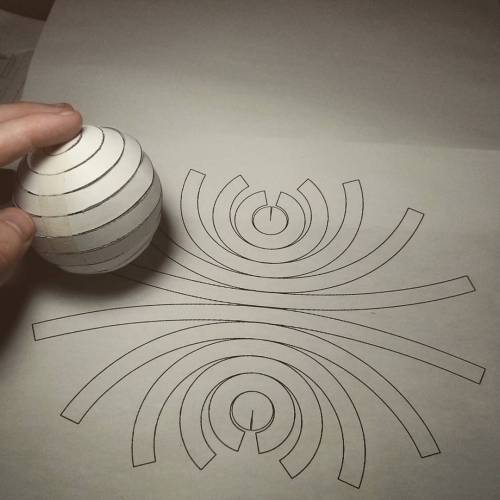
Can you flatten a sphere?
The answer is NO, you can not. This is why all map projections are innacurate and distorted, requiring some form of compromise between how accurate the angles, distances and areas in a globe are represented.
This is all due to Gauss’s Theorema Egregium, which dictates that you can only bend surfaces without distortion/stretching if you don’t change their Gaussian curvature.
The Gaussian curvature is an intrinsic and important property of a surface. Planes, cylinders and cones all have zero Gaussian curvature, and this is why you can make a tube or a party hat out of a flat piece of paper. A sphere has a positive Gaussian curvature, and a saddle shape has a negative one, so you cannot make those starting out with something flat.
If you like pizza then you are probably intimately familiar with this theorem. That universal trick of bending a pizza slice so it stiffens up is a direct result of the theorem, as the bend forces the other direction to stay flat as to maintain zero Gaussian curvature on the slice. Here’s a Numberphile video explaining it in more detail.
However, there are several ways to approximate a sphere as a collection of shapes you can flatten. For instance, you can project the surface of the sphere onto an icosahedron, a solid with 20 equal triangular faces, giving you what it is called the Dymaxion projection.
The Dymaxion map projection.
The problem with this technique is that you still have a sphere approximated by flat shapes, and not curved ones.
One of the earliest proofs of the surface area of the sphere (4πr2) came from the great Greek mathematician Archimedes. He realized that he could approximate the surface of the sphere arbitrarily close by stacks of truncated cones. The animation below shows this construction.
The great thing about cones is that not only they are curved surfaces, they also have zero curvature! This means we can flatten each of those conical strips onto a flat sheet of paper, which will then be a good approximation of a sphere.
So what does this flattened sphere approximated by conical strips look like? Check the image below.
But this is not the only way to distribute the strips. We could also align them by a corner, like this:
All of this is not exactly new, of course, but I never saw anyone assembling one of these. I wanted to try it out with paper, and that photo above is the result.
It’s really hard to put together and it doesn’t hold itself up too well, but it’s a nice little reminder that math works after all!
Here’s the PDF to print it out, if you want to try it yourself. Send me a picture if you do!
More Posts from Philosophical-amoeba and Others






If this Tibetan padlock looks massive that is because it is! And it has not one but THREE equally ginormous keys to open it! It is definitely a very intriguing padlock and indeed something of a puzzle as all three keys must be fitted simultaneously for it to open. There is one lock at the top underneath a panel, another on the side, and a third under a hinged panel on the back. Quite impressive!
We think it dates from the late nineteenth or early twentieth century and was purchased for the museum by Emslie Horniman, who was the son of our founder Frederick Horniman.
Object no. 13.223

Red is good – the brain uses color to help us choose what to eat
Red means “Green light, go for it!” Green means: “hmm, better not!” Like an upside down traffic light in our brain, color helps us decide whether or not to eat something. This, according to a study at the International School for Advanced Studies (SISSA) in Trieste and recently published in the journal Scientific Reports stating that vision is the main sense we use to guide us in food choices. To evaluate calorie intake, we rely on a “color code.”
“According to some theories, our visual system evolved to easily identify particularly nutritious berries, fruits and vegetables from jungle foliage,” says Raffaella Rumiati, SISSA neuroscientist and coordinator of the new study. The human visual system is trichromatic: in the retina, the light-sensitive organ of the eye, there are three classes of photoreceptors (cones) tuned preferentially to three different bands of the visible spectrum. This implies that we can see a large number of colors (more than monochromatic and dichromatic animals, less than those with 4, even 5 types of photoreceptor). “We are particularly efficient at distinguishing red from green,” says Rumiati. This sophistication testifies to the fact that we are “visual animals,” unlike others, dogs, for example, who depend on their sense of smell. “It is mainly the color of food that guides us, and our experiments show how,” explains Rumiati. “To date, only a few studies have been focused on the topic.”
What do we look for in food? Nutrition, of course, or calorie-dense content, and high protein. “In natural foods, color is a good predictor of calories,” explains Francesco Foroni, SISSA researcher and first author of the study. “The redder an unprocessed food is, the more likely it is to be nutritious, while green foods tend to be low in calories.” Our visual system is clearly adapted to this regularity. “The participants in our experiments judged foods whose color tended towards red as higher in calories, while the opposite was true for greens,” continues Giulio Pergola, a researcher at the University of Bari, and one of the authors of the study. “This is also true for processed, or cooked foods, where color loses its effectiveness as an indicator of calories.”
Actually, the scientific literature shows clearly that cooked foods are favored over natural foods and the phenomenon has been observed even in other species besides humans. “Cooked foods are always preferred because, compared to natural foods, there is more nutrition for the same quantity,” explains Rumiati. “With cooked foods, however, the dominance of red over green no longer provides reliable information, which might lead us to believe that the brain would not apply the rule to processed foods. On the contrary, it does, which hints at the presence of ancient evolutionary mechanisms from before the introduction of cooking.”
Another nod in favor of this hypothesis is the fact that the color code in the Rumiati and colleagues experiments does not come into play for items other than food: “The preference for red over green is not observed with non-edible objects,” says Rumiati. “This means that the color code of the visual system activates correctly only with food stimuli.”
Inner traffic light for eating healthier
Our findings, besides increasing our knowledge of the visual system, offer interesting possibilities on many fronts which could have an important impact on the public health: marketing food, for example, and treating eating disorders. “Much is being done today to encourage healthier eating,” notes Rumiati. “For example, trying to convince the people to eat foods lower in calories.” Some countries propose bans on certain types of products, such as carbonated soft drinks and high fat foods. In some cases, there is a disclaimer on the packaging, as with cigarettes. Perhaps food color could be used to produce significant results, even if artificial. “










Fairyland, or, Through the Enchanted Forest.
[Gloucester, England], [Roberts Brothers], [ca. 1890-1915].
Bryn Mawr College Special Collections GV1469.F221 T4 1890z
This whimsical board game, with its blinding powder, cabbage, meat, and cake tokens, has it all! Wild two-headed animals ravage the forest and hapless children must make it through armed only with odd grocery items! The game is a new addition to the Bryn Mawr College Special Collections as part of the Ellery Yale Wood Collection of Children’s Books.




On this date in 1884, the first edition of what would become the Oxford English Dictionary was published under the name A New English Dictionary on Historical Principles; Founded Mainly on the Materials Collected by The Philological Society. Research for the OED had begun in 1857, when the Philological Society in London established an “Unregistered Words Committee” to find words that were either poorly defined, or absent from contemporary dictionaries. When the list of unregistered words outnumbered the amount of words found in nineteenth-century dictionaries, the group decided to write their own. The Oxford University Press agreed to publish the dictionary in 1879, and the group published the first fascicle – which covered A to Ant –in 1884 to disappointing sales. It wasn’t until 1928 that the final fascicle was published, totaling 128 fascicles in total.
In 1933, a thirteen-volume set including all fascicles and a one-volume supplement went on sale under its current name: Oxford English Dictionary – only seventy-six years in the making!
Pictured above is our well-loved copy of that historic first fascicle, which includes the preface to the dictionary and entries A through Ant. While the volume is huge and a little intimidating, it was only the beginning to what would become the most comprehensive dictionary in the English language.
Ed. James A.H. Murray. A New English Dictionary on Historical Principles; Founded Mainly on the Materials Collected by The Philological Society v. 1. Oxford: Clarendon Press, 1888. 423 M96 v. 1.


Dau lun o weithwyr G P Lloyd & Co, Dumballs Rd, Caerdydd, gwneuthurwyr coesau pren i offer, c. 1930, ond beth yw'r gwahaniaeth rhwng y ddau?
-
Two photos of workers at G P Lloyd & Co, Dumballs Road, Cardiff, manufacturers of wooden tool handles, c. 1930. Can you spot the difference?
From the archives at St Fagans National Museum of History.
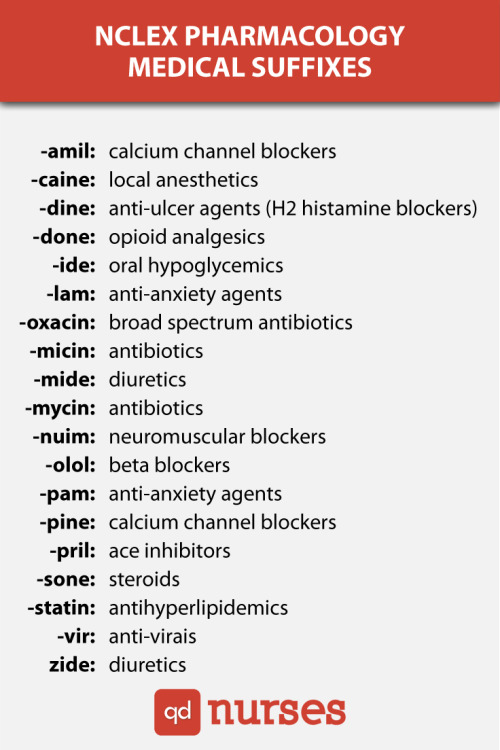
NCLEX Pharmacology Medical Suffixes
-amil = calcium channel blockers
-caine = local anesthetics
-dine = anti-ulcer agents (H2 histamine blockers)
-done = opioid analgesics
-ide = oral hypoglycemics
-lam = anti-anxiety agents
-oxacin = broad spectrum antibiotics
-micin = antibiotics
-mide = diuretics
-mycin = antibiotics
-nuim = neuromuscular blockers
-olol = beta blockers
-pam = anti-anxiety agents
-pine = calcium channel blockers
-pril = ace inhibitors
-sone = steroids
-statin =antihyperlipidemics
-vir = anti-virais
-zide = diuretics
12 Amazing Facts About Elephants
In honor of World Elephant Day, we present you with 12 little known facts about one of our favorite creatures…in GIFs, of course.
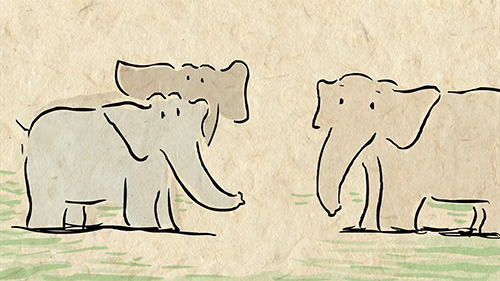
1. Elephants know every member of their herd and are able to recognize up to 30 companions by sight or smell.
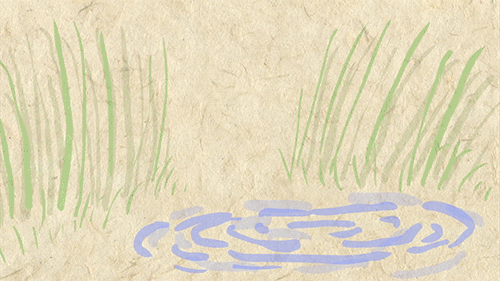
2. They can remember and distinguish particular cues that signal danger and can recall locations long after their last visit.
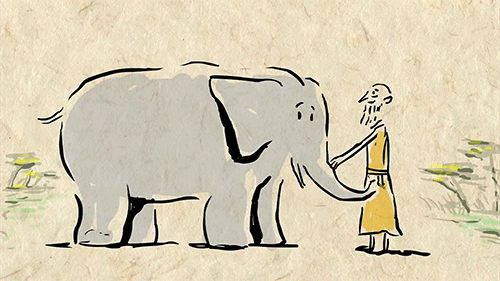
3. An elephant’s memory is not limited to its herd, nor is it limited to its species. In one instance, two circus elephants that performed together rejoiced when crossing paths 23 years later. Elephants have also recognized humans that they once bonded with after decades apart. 4.
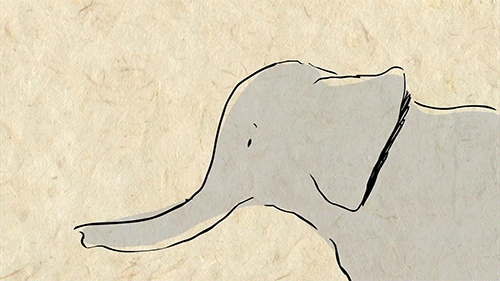
4. The elephant boasts the largest brain of any land mammal as well as an impressive encephalization quotient (the size of the animal’s brain relative to its body size). The elephant’s EQ is nearly as high as a chimpanzee’s.
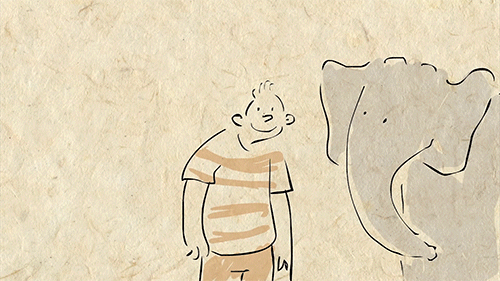
5. The elephant brain is remarkably similar to the human brain, with as many neurons and synapses, as well as a highly developed hippocampus and cerebral cortex.
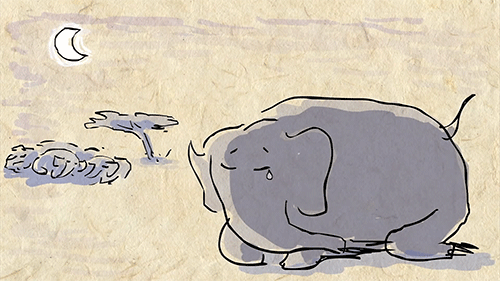
6. Elephants are one of the few non-human animals to suffer from post-traumatic stress disorder.

7. Elephants are creative problem solvers.
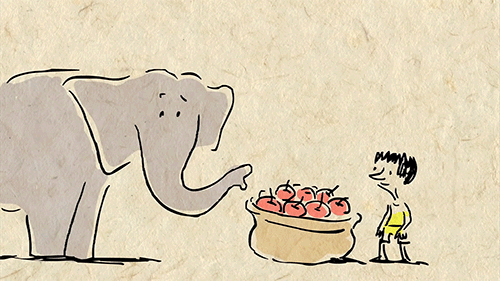
8. Don’t try to outsmart an elephant! They have an understanding of basic arithmetic and can even keep track of relative quantities.
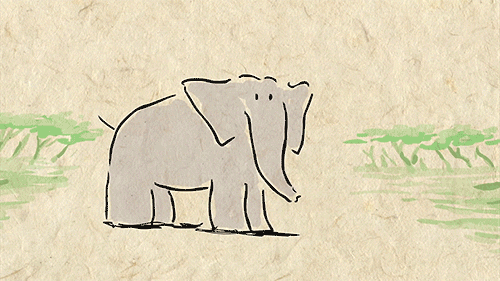
9. Elephants communicate using everything from body signals to infrared rumbles that can be heard from kilometers away. Their understanding of syntax suggests that they have their own language and grammar.
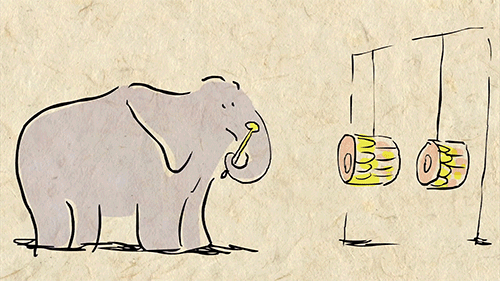
10. Elephants can recognize 12 distinct tones of music and recreate melodies.

11. Elephants are the only non-human animals to mourn their dead, performing burial rituals and returning to visit graves.
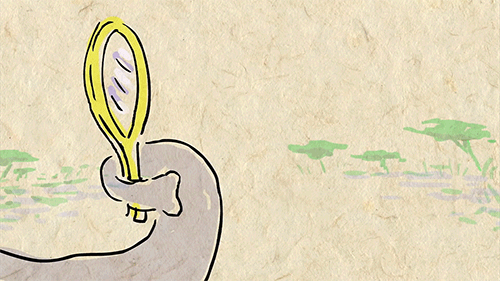
12. Elephants are one of the few species who can recognize themselves in the mirror.
Given what we now know about elephants, and what they continue to teach us about animal intelligence, it is more important than ever to make sure that these magnificent creatures do not vanish.
Check out some more fun elephant facts here and be sure to watch the TED-Ed Lesson Why elephants never forget - Alex Gendler
Animation by the ever-talented Avi Ofer
5 NASA Software Codes You Can Download – For Free!
One of the biggest steps of any mission starts right here on Earth at a computer desk – NASA runs on software, period. Rovers can’t move, spacecraft can’t fly, even rockets can’t blast off without the software codes that run them all.
We’ve compiled hundreds of these powerful codes into one location at software.nasa.gov. And guess what? You can start downloading them right now for free! Here are just a few you can use:
1. TetrUSS (Tetrahedral Unstructured Software System)
TetrUSS has been used extensively for space launch vehicle analysis and design, like on the Space Launch System, which is planned to take humans to Mars.

You really could say it’s helping us to “blast off.” Outside of NASA, this software has been used to analyze Mars planetary entry vehicles, ballistics and even high-altitude sky diver aerodynamics. Basically if anything has moved through any planetary atmosphere, this software has played a role.
2. KNIFE (part of the FUN3D software and released as a package)
The name may be a bit intimidating, but with good reason – KNIFE packs a powerful punch.

It was created to help us learn more about the sonic booms that resonate when planes break the sound barrier, but it has also helped develop green energy sources such as wind turbines and techniques to minimize drag for long-haul trucking. Maybe we should re-name this versatile and handy code, “Swiss Army KNIFE?”
3. Cart3D (Automated Triangle Geometry Processing for Surface Modeling and Cartesian Grid Generation)
If software codes went to high school, Cart3D would be Prom Queen. This software is so popular, it is being used in almost every mission area here at NASA.

Engineers and scientists are currently using it to model everything from advanced drones to quieter supersonic aircraft.
4. FACET (Future Air Traffic Management Concepts Evaluation Tool)
Frequent flyers: this may be your favorite code without even knowing it. FACET was developed to evaluate futuristic concepts in air traffic management, and it has served as a testbed for assessing today’s regular operations.

To sum it up, this software code helps airports keep planes organized in the air and on the ground.
5. GIPSY-OASIS
GIPSY-OASIS is part of the GPS system to end all GPS systems. It’s so accurate, John Deere used it to help create self-driving tractors.

How? John Deere already had a navigation system in the works, but it could only be used in certain parts of the world.

Our ground stations are all across the globe, and our software ensures accuracy down to a few inches. And so, a new breed of tractor was born! Did we mention this software is free?
These are just a few examples of the software NASA has available for free public and consumer use. To browse the catalog online, check out software.nasa.gov.
Make sure to follow us on Tumblr for your regular dose of space: http://nasa.tumblr.com
-
 j0zie liked this · 2 months ago
j0zie liked this · 2 months ago -
 beckettbeforemidnight liked this · 3 months ago
beckettbeforemidnight liked this · 3 months ago -
 adequate-images reblogged this · 3 months ago
adequate-images reblogged this · 3 months ago -
 void-of-the-valley liked this · 3 months ago
void-of-the-valley liked this · 3 months ago -
 flying-for-freedom liked this · 3 months ago
flying-for-freedom liked this · 3 months ago -
 dataisgold reblogged this · 4 months ago
dataisgold reblogged this · 4 months ago -
 dataisgold liked this · 4 months ago
dataisgold liked this · 4 months ago -
 beachchairbookworm liked this · 6 months ago
beachchairbookworm liked this · 6 months ago -
 aliaaafify reblogged this · 7 months ago
aliaaafify reblogged this · 7 months ago -
 aliaaafify liked this · 7 months ago
aliaaafify liked this · 7 months ago -
 yourbuddyjasyhui liked this · 9 months ago
yourbuddyjasyhui liked this · 9 months ago -
 itsjonhyjay liked this · 10 months ago
itsjonhyjay liked this · 10 months ago -
 crewhst liked this · 11 months ago
crewhst liked this · 11 months ago -
 freakingnerdblog reblogged this · 1 year ago
freakingnerdblog reblogged this · 1 year ago -
 infinityflesh00 liked this · 1 year ago
infinityflesh00 liked this · 1 year ago -
 bananaede reblogged this · 1 year ago
bananaede reblogged this · 1 year ago -
 bananaede liked this · 1 year ago
bananaede liked this · 1 year ago -
 ddenzo reblogged this · 1 year ago
ddenzo reblogged this · 1 year ago -
 ddenzo liked this · 1 year ago
ddenzo liked this · 1 year ago -
 exjz reblogged this · 1 year ago
exjz reblogged this · 1 year ago -
 lyiadia liked this · 1 year ago
lyiadia liked this · 1 year ago -
 mexrican liked this · 1 year ago
mexrican liked this · 1 year ago -
 diminirita liked this · 1 year ago
diminirita liked this · 1 year ago -
 kingsigenchildra liked this · 1 year ago
kingsigenchildra liked this · 1 year ago -
 mike1universe liked this · 1 year ago
mike1universe liked this · 1 year ago -
 karennesmith reblogged this · 1 year ago
karennesmith reblogged this · 1 year ago -
 karennesmith liked this · 1 year ago
karennesmith liked this · 1 year ago -
 not-kashy liked this · 1 year ago
not-kashy liked this · 1 year ago -
 bratjedi0 liked this · 1 year ago
bratjedi0 liked this · 1 year ago -
 kirby5087 liked this · 1 year ago
kirby5087 liked this · 1 year ago -
 no1heartbreaker reblogged this · 1 year ago
no1heartbreaker reblogged this · 1 year ago -
 rodob777 liked this · 1 year ago
rodob777 liked this · 1 year ago -
 pablilloelpillo liked this · 1 year ago
pablilloelpillo liked this · 1 year ago
A reblog of nerdy and quirky stuff that pique my interest.
291 posts

